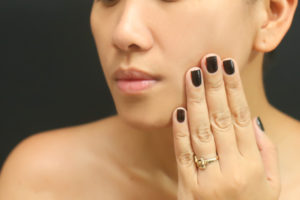All of us want to look good, no matter what the season. Coping with the skin is a daily affair, needing an awareness of its needs and a little knowledge about the kind of treatment it deserves to look best. During winter months, the skin is influenced by lack of humidity in the air. Extreme cold can irritate the skin. This is more so for those with normal to dry skin. By the end of winter months, you may find the skin becoming rough and flaky or highly sensitive with rough red patches. This indicates dehydration. Even people with oily skin can suffer during winter months. As the skin has many layers, the outermost layer of the oil skin can get dry.
With winter nearing end, you can continue to give your skin moisturising treatments. Unlike winter, you will find the skin becoming more receptive to these treatments.

If the skin is very dehydrated and has rough reddish patches, avoid applying soap. Use a cleanser morning and night instead. In fact, washing with soap dries out skin. If you must use soap, try a mild glycerin soap. Apart from daily cleansing, give the skin some nourishment. As a home remedy, you can try applying a little sesame seed (til) oil and pat the skin with a hot moist towel. Or you one can apply a little milk with a few drops of honey. Leave it on for 10 to 15 minutes and wash off with water. These treatments are good for normal to dry skins. If you wish to make a cleanser at home, add five drops of oil to one tablespoon cold milk. Mix it well. Using cotton wool, use this mixture to wipe the skin. You will find that milk is very soothing to dry skin.
If you have an oily skin, add one teaspoon pure glycerin to 50 ml rose water. Put it in a bottle and shake well. Apply this on the face. You will find glycerin and rose water provide enough moisture to the skin. You can apply honey on an oily skin. Honey is a powerful natural moisturiser and softens the skin. You can apply honey daily on the face and wash it off after 15 minutes. This will help to remove the effects of winter on the skin.
If you have a combination skin, it will probably have an oily T-zone which consists of the forehead, nose and chin, while the rest of the face is dry. The glycerin and rose water treatment can easily be used on a combination skin, as it will benefit both the dry and oily areas.
Moisturisation of the skin is very important after cleansing. However, if you go out in the sun in the morning, you can apply a sunscreen lotion. Most sunscreen lotions have built-in moisturisers, so this should be adequate protection. If your skin is very dry, use a sunscreen cream, instead of a lotion. If you have a dry skin, you need to nourish the skin at night. After cleansing, apply a good nourishing cream and massage it on the skin with a few drops of water. This helps better absorption. Wipe off the cream with moist cotton wool before bedtime.
You can prepare a mask at home and apply it three times a week. Mix three teaspoons choker (for dry skin) or three teaspoon oats (for oily skin) with one teaspoon each of honey, egg white and curd. If you do not want to use egg, add two teaspoons curd. Apply this mixture on the face, avoiding the lips and the area around the eyes. Wash it off after 20 minutes. You can buy the oats available for making porridge.